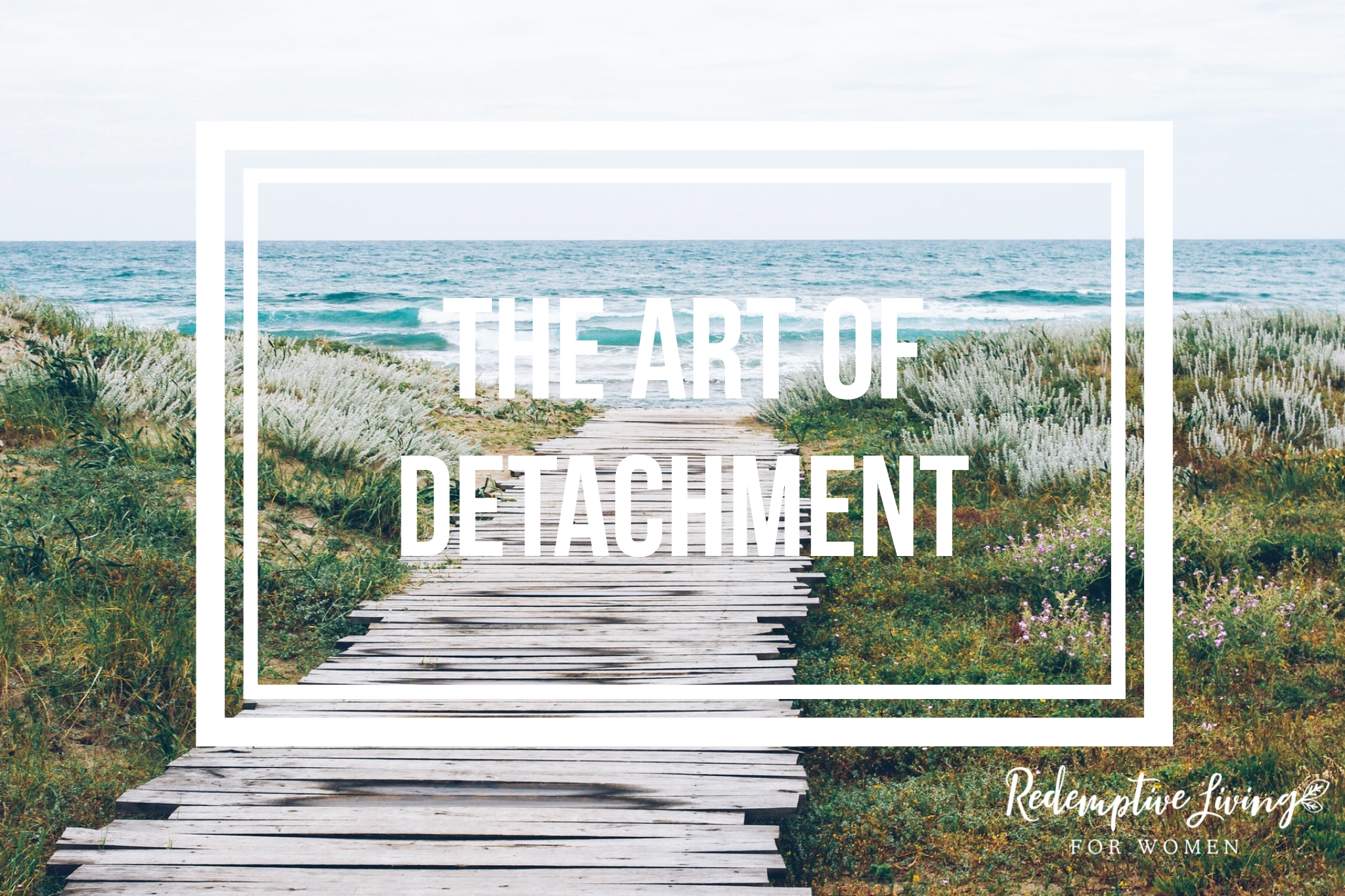The Art of Detachment
Hi Girls -
How are we hanging in? It’s officially Fall which makes my heart so so happy. Love me some Fall.
I want to spend some time talking detachment on the blog this month. It’s a topic that comes up a lot in 1:1 sessions as well as in groups. Me and my team have spent some time talking about it recently - and so I thought it would be good to share some concepts + thoughts on it.
I also want to talk about it because I’m kicking around the idea of intentionally working this month on making my life as stress-free as possible. (And detachment can help with this!) Less stress means saying no to more things, focusing on meditation and prayer, and doing a lot of self-care. If it goes well, I might pick a month coming up where we can all focus in this community for one month, on a stress detox. Let me know if you are interested!
Now - moving onto detachment - a key ingredient of self-care.
What is Detachment?
First, let’s consider what detachment is (and is not). One thing that might help as you explore detachment is to remember it’s the opposite of attachment. Attachment isn’t a bad thing - so it’s important to delineate that detachment is a strategy we can use when we are attached to something in such a way that negatively affects us.
Specifically, detachment can be used when we need to detach from a person in our lives that is having a less than positive impact on us or when we need to detach from emotional pain or thoughts that are sending us down the rabbit hole.
When we detach, we focus on ourselves and work to stay in the present.
Remember that detachment isn’t a negative thing nor is it meant to punish others - it’s simply a strategy we can use to gain distance and relief from others. It’s part of our self-care plan.
When Should We Practice Detachment?
Here are some of the signs that detachment might be a good strategy to utilize:
we feel a lack of control with our emotions
we feel overly focused on someone else and disconnected from ourselves
we feel overly focused on emotional pain or embarrassment or shame
we are experiencing confusion within the relationship and feel like we have a case of whip-lash
How Do We Detach?
This is the big question - yes? Because detachment is hard. to. do. I have yet to meet a woman that says she is really good at detachment. It’s truly an art and it belongs in the "life work” category.
Let’s first talk about detachment from people that are having a negative effect on us. Sure, oftentimes when we talk detachment at Redemptive Living - we are talking about detaching from our husband during the betrayal process. But keep in mind that you can also use these strategies to detach from others that might be affecting you in a not so great way.
Detaching from Others
I want to provide you with three ideas that can help you with detachment. Know that detachment is hard and it can be complex to carry out - but I tried to simplify this as much as possible - as oftentimes simplicity works best.
#1 - Distance
Think about these areas of well-being - emotional, mental, physical and sexual and consider what it looks like to take a step back from him in these four areas. For example, you might decide that you are only going to have conversations about parenting and household logistics for the next week (emotional detachment). You might decide you are going to sleep in the guest room (physical and sexual detachment). You might decide you are going to respond out loud with - “I'm not going to have that conversation with you right now” when he tries to manipulate you (mental detachment).
You might see that these examples are also examples of boundaries. Remember that detachment is rooted in self-care and boundaries. It’s important to create a plan for how you are going to detach with specific examples as this will help give you scaffolding in the coming days.
#2 - Focus on You
Once you have a plan for the specific ways you are going to detach - it’s important to focus on you. As a gal on my team said this week - get your feet firmly planted (away from him) and pour into yourself. Make a plan for what this will look like: exercise, journaling, art, music, nature, cleaning out a closet (yes, Ralenda, I still think of you every time I mention organizing a closet!). There is a list of self-care activities in the back of the Rescued workbook you can reference as well.
#3 - Watch
So you have taken a couple of steps back and you are focusing on you. Now while in this position, it’s important to start watching him to see - does he take steps toward you? Or does he step further away from you?
Taking steps toward you means respecting where you are at, asking for permission to share his heart with you if and only if you are ready, taking up the slack around the house while you pour into yourself. If he is floundering and not taking steps toward you - hold steady. We can talk a bit in the next blog post about what to do if this is the case. Just know if he is doing this, detachment becomes even more important.
In addition - be watching for clarity and peace. When we detach in an effective way - we start to see things much more clearly. We start to be able to breathe again. If this is not the case - go back to steps #1 and steps #2 and see what else you can do to create distance and pour into yourself.
One Last Note
As you consider if you need to detach and start to devise your plan, come up with a short term goal of how long you want to try to detach and then reassess. For instance, oftentimes, I will suggest trying it for one to two weeks max before reassessing and deciding on what to do next.
In the next blog post, we will discuss what happens if he doesn’t start to take steps toward you. We will also discuss what detachment from our own emotional pain can look like (this is also oftentimes called grounding).
As always, would love to hear from you.
xo - Shelley
ps. Looking for more on detachment? Here is another post and here is a video!


